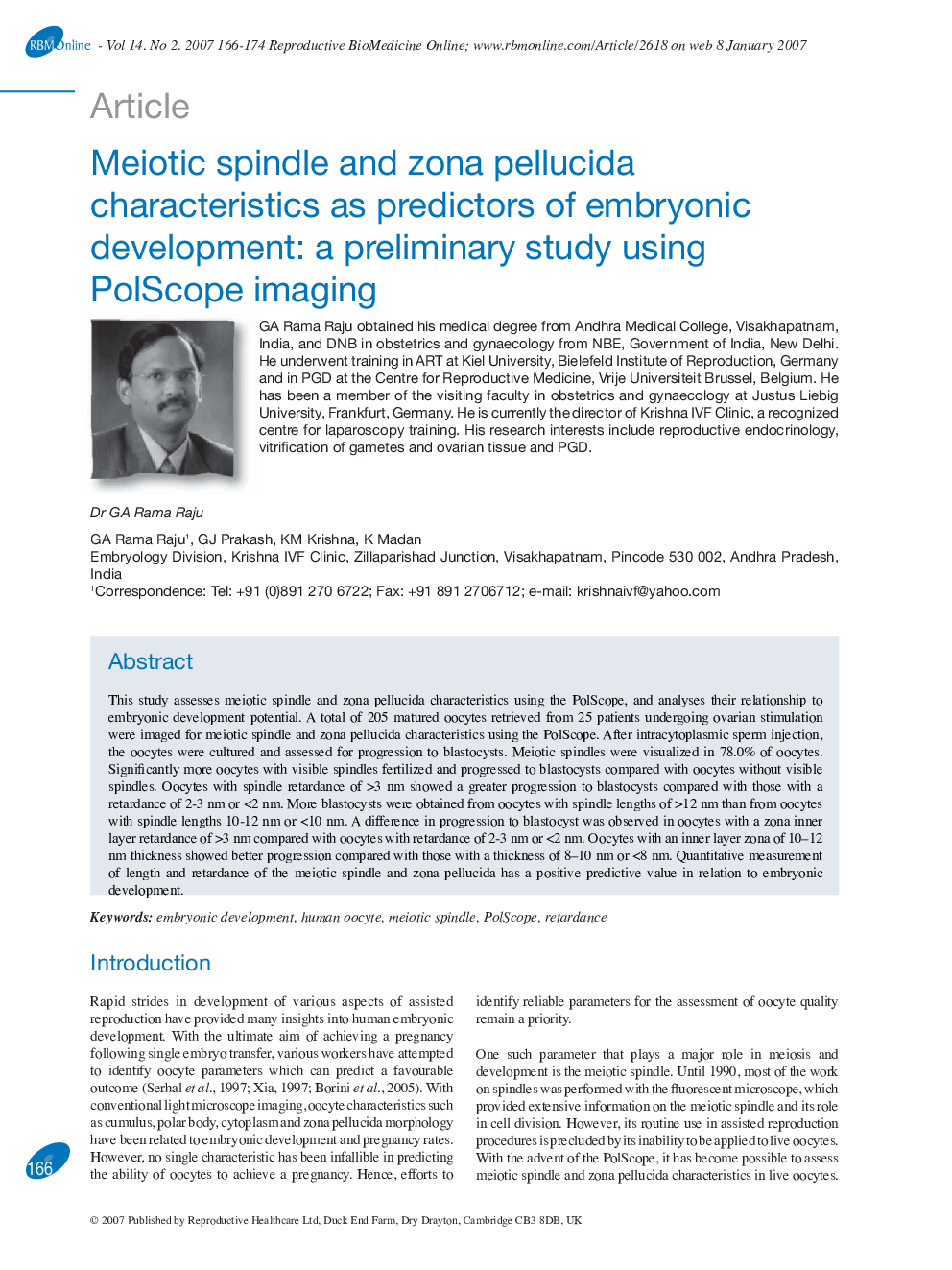| Article ID | Journal | Published Year | Pages | File Type |
|---|---|---|---|---|
| 3973224 | Reproductive BioMedicine Online | 2007 | 9 Pages |
This study assesses meiotic spindle and zona pellucida characteristics using the PolScope, and analyses their relationship to embryonic development potential. A total of 205 matured oocytes retrieved from 25 patients undergoing ovarian stimulation were imaged for meiotic spindle and zona pellucida characteristics using the PolScope. After intracytoplasmic sperm injection, the oocytes were cultured and assessed for progression to blastocysts. Meiotic spindles were visualized in 78.0% of oocytes. Significantly more oocytes with visible spindles fertilized and progressed to blastocysts compared with oocytes without visible spindles. Oocytes with spindle retardance of >3 nm showed a greater progression to blastocysts compared with those with a retardance of 2–3 nm or <2 nm. More blastocysts were obtained from oocytes with spindle lengths of >12 nm than from oocytes with spindle lengths 10–12 nm or <10 nm. A difference in progression to blastocyst was observed in oocytes with a zona inner layer retardance of >3 nm compared with oocytes with retardance of 2–3 nm or <2 nm. Oocytes with an inner layer zona of 10–12 nm thickness showed better progression compared with those with a thickness of 8–10 nm or <8 nm. Quantitative measurement of length and retardance of the meiotic spindle and zona pellucida has a positive predictive value in relation to embryonic development.
